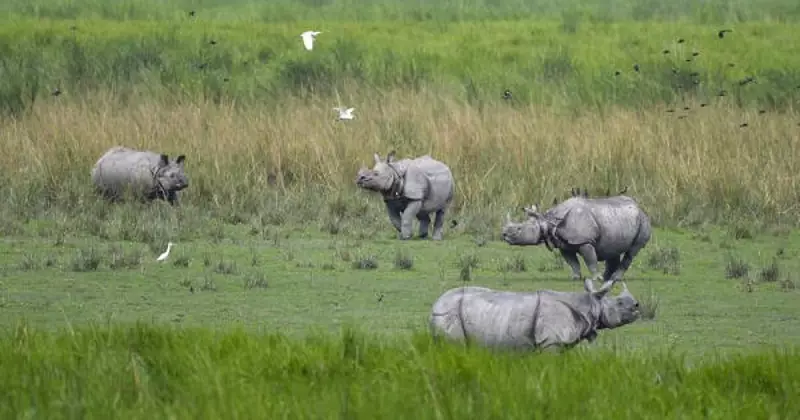
Assam's iconic Kaziranga National Park is embarking on an exciting new chapter, moving beyond its famous 'Big Five' to showcase the incredible diversity of species that call this UNESCO World Heritage Site home. While the park remains the primary habitat for the world's largest population of one-horned rhinoceroses, authorities are now highlighting its rich ecosystem that extends far beyond these magnificent creatures.
Beyond the Rhino Kingdom
For decades, Kaziranga has witnessed maximum focus for tourism in Assam primarily due to its rhino population. The park houses an impressive 2,613 one-horned rhinos according to the 2022 census, making it the most significant conservation success story for this vulnerable species. However, park management has recognized the need to present a more comprehensive picture of Kaziranga's ecological wealth.
The new initiative aims to educate visitors about the hundreds of other species that contribute to the park's vibrant ecosystem. Recent documentation efforts have revealed stunning diversity, from colorful fish species inhabiting the park's water bodies to numerous frog varieties that play crucial roles in the food chain.
Documenting Hidden Treasures
Official social media channels managed by Kaziranga National Park and Tiger Reserve have begun showcasing this lesser-known wildlife. Recent posts feature beautifully documented fish and frog species found within the park boundaries, highlighting creatures that most tourists typically overlook.
This strategic shift represents a significant evolution in how Kaziranga presents itself to the world. Rather than being known solely as a rhino sanctuary, the park is positioning itself as a complete biodiversity hotspot worthy of comprehensive exploration and study.
Enhanced Visitor Experience
The expanded focus promises to enrich the tourist experience significantly. Visitors will now have opportunities to learn about and potentially observe the numerous other species that contribute to Kaziranga's ecological balance. This approach not only spreads visitor attention more evenly across the park but also helps raise awareness about conservation needs for all species, not just the charismatic megafauna.
Park authorities anticipate that this broader perspective will appeal to specialized tourist segments, including bird watchers, herpetologists, and general nature enthusiasts seeking a more complete wilderness experience. The move also aligns with global trends in ecotourism that emphasize holistic ecosystem appreciation rather than single-species focus.
As of November 16, 2025, this new direction represents Kaziranga's commitment to sustainable tourism and comprehensive conservation. The park continues to balance its role as the primary protector of the one-horned rhino while celebrating the full spectrum of life it supports.





